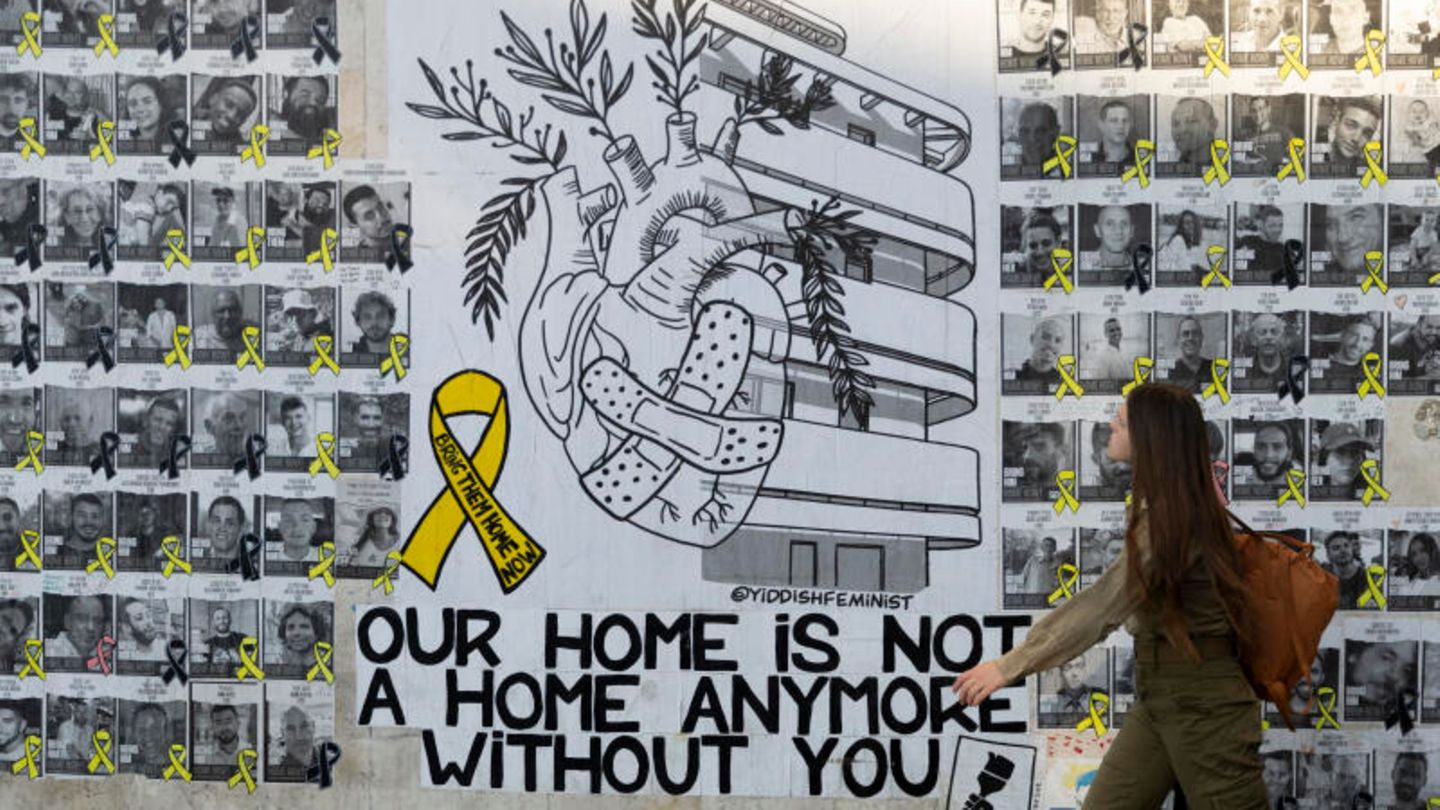Can Israel and Hamas finally agree on a ceasefire in the Gaza war? The decisive turning point may be imminent.
It is once again a critical moment in the Middle East: top representatives of the USA, Qatar, Egypt and Israel are negotiating steps towards a ceasefire in the Gaza war and thus a de-escalation of the situation in the region as a whole. The Islamist Hamas was very cautious in its comments at the start of the talks in Doha. According to information from the German Press Agency, it is not taking part directly in the negotiations as before, but will be kept informed about their content on an ongoing basis.
In addition to a renewed ceasefire, the talks are about exchanging hostages for Palestinian prisoners. However, the positions of Hamas and Israel seem so far apart that there is little hope of a breakthrough.
Hamas does not want to negotiate new conditions
Hamas will not negotiate any new conditions, Hamas spokesman Osama Hamdan told DPA. The talks in Doha should only focus on the implementation of the peace plan presented by US President Joe Biden in May, not on its details. Depending on how the negotiations progress, an extension until Friday is also possible, as the dpa learned from people familiar with the talks. The talks have not made any progress for months.
The pressure has increased because, following the killing of two of Israel’s key opponents, a potentially serious retaliatory attack by Iran and Hezbollah in Lebanon against Israel is expected. Biden had already spoken of a “decisive moment” in May. The chances of implementing his plan, which is divided into three phases, are considered slim. The mediators, the USA, Qatar and Egypt, have been trying for months to persuade Israel and Hamas to agree to a ceasefire, as was last done last November.
Israel apparently demands release of 33 living hostages
According to reports, Israel is currently demanding the release of 33 living hostages held by Hamas in the event of a ceasefire. These include women and children, as well as the elderly and sick, reported the newspaper “Yediot Ahronoth” citing Israeli officials involved in the negotiations. The plan presented by US President Biden envisages such releases in a first phase during a six-week ceasefire. In return, Palestinians imprisoned in Israel would be released – as in a similar exchange during the ceasefire in November.
According to Israeli figures, Hamas still has 115 hostages in its power, of whom Israel has declared 41 dead. In addition, other hostages whose fate is unknown are probably no longer alive. The New York Times reported about three months ago that Hamas had informed negotiators that the 33 hostages eligible for release in a first step included dead people. Terrorists from Hamas and other groups killed around 1,200 people and kidnapped another 250 in southern Israel on October 7, 2023.
Crisis region
Who is actually pursuing which goal in the Middle East?
Control of the Philadelphia Corridor remains a point of contention
The question of who will control Gaza after the Israeli military withdraws, including the important border with neighboring Egypt, remains controversial. Israel’s Chief of Staff Herzi Halevi stated during a visit to the so-called Philadelphia Corridor that the Israeli army could maintain control here even without a permanent presence and with only sporadic advances. According to Israel, Hamas previously smuggled weapons from Egypt to Gaza in this area, which Egypt denies. Hamas is demanding a complete withdrawal of Israel from the coastal area in order to reach an agreement.
Israel has now achieved everything possible there militarily – this is the assessment of high-ranking US government officials according to a report in the “New York Times”. Israel’s military has dealt Hamas a heavy blow and destroyed important supply routes from Egypt to Gaza. Hamas is severely weakened, but Israel will never be able to completely eliminate it, according to the assessment. “Both sides have to make compromises,” John Kirby of the US National Security Council told CNN.
Hamas Authority: More than 40,000 dead in Gaza Strip
The high-ranking Hamas official Hamdan accused Israel of blocking the negotiations by constantly imposing new conditions – for example, by refusing to withdraw from the Philadelphia Corridor or the Rafah border crossing. Israel “does not want a ceasefire,” said Hamdan. Despite the efforts of Qatar, Egypt and the USA, the mediators have not succeeded in putting pressure on Israel to stick to the ceasefire plans that have been presented.
Israel’s Prime Minister Benjamin Netanyahu recently rejected the accusation that he had set new conditions and thus blocked a deal. Conversely, he accused Hamas of making new demands. Netanyahu wants to militarily crush Hamas in the Gaza Strip and ensure that it is no longer able to govern the coastal area that has been sealed off by Israel for many years.
After the unprecedented terrorist attack by Hamas on October 7, Israel began devastating attacks throughout the Gaza Strip. According to Palestinian sources, the number of victims rose to over 40,000 dead and 92,400 injured. The Hamas-controlled health authority does not differentiate between fighters and civilians in its figures.
Source: Stern
I have been working in the news industry for over 6 years, first as a reporter and now as an editor. I have covered politics extensively, and my work has appeared in major newspapers and online news outlets around the world. In addition to my writing, I also contribute regularly to 24 Hours World.




